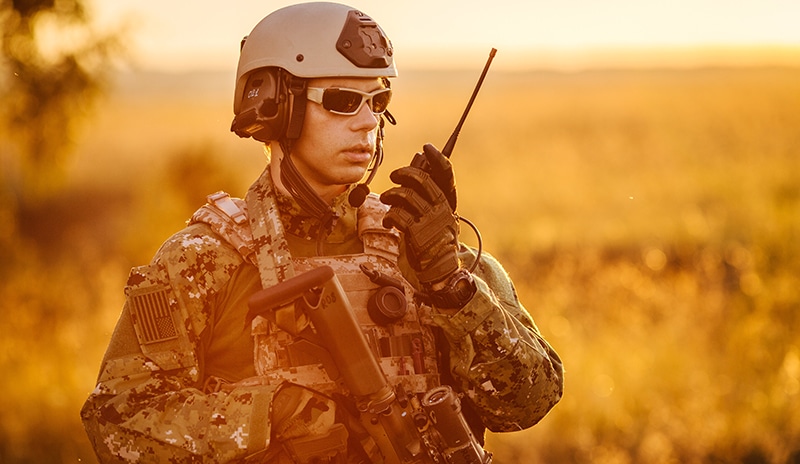TETRA and Project 25 (P25) are the two technologies that have become consolidated as the reference for public safety and emergency response agencies. Both of them provide an efficient use of the spectrum, both have been designed for regional or national networks and meet the basic voice requirements of Public Safety users, but there are some differences between them. Let’s start at the beginning.
TETRA (Terrestrial Trunked Radio) is a standard defined by the ETSI (European Telecommunications Standards Institute) that gathers the proposals of network operators, national administrator, equipment manufacturers and users in order to establish an open normative for the trunking digital mobile communications.
Designed specifically to meet the needs of mission-critical users, network security and availability are key aspects. It offers a unified high end solution, from small private networks to large national systems and, although it was developed for use within the European Union, it has become the worldwide “de facto” standard for critical communications (except North America), with deployments in more than 100 countries and an estimated 3 million users worldwide.
On the other hand, P25 is configured as a set of open standards resulting from the combined work of different public safety organizations in the United States, standardized and maintained by the Telecommunications Industry Association (TIA).
Strongly implemented in North America, P25 is an open architecture, user-driven suite of system standards that define digital radio communications system architectures capable of serving the needs of Public Safety and Government organizations. The P25 standard exists in the public domain, allowing any manufacturer to produce compatible equipment. It has three modes of operation: the analog mode; the conventional digital mode, in which users manually select the desired channel, and the trunked mode, in which they select the group they want to talk to and the system dynamically directs them to an available channel. This is the first big difference, as TETRA is designed for native trunked operation. But there are more divergences.
P25 uses 12.5 kHz channels with FDMA technology (phase 1) or 6.5 kHz TDMA (phase 2), while TETRA uses 25 kHz channels and 4:1 TDMA modulation, a feature that affects channel capacity: provides 4 communications channels which can be dynamically allocated to different functions per pair of frequencies, while P25 only provides one (phase 1) or 2 (phase 2) communication channels per frequency pair.
This TDMA structure whereby one repeater offers 4 radio channels also makes the hardware requirements of TETRA base stations lower, thus reducing costs. In contrast, P25 to achieve those four channels would need four or two repeaters.
Furthermore, TETRA incorporates a series of functionalities that significantly improve the network security. To the end-to-end encryption that both technologies offer, TETRA adds an Air Interface Encryption (AIE) for voice, data and signalling not available in P25. In addition, TETRA enables user authentication, so that any terminal that tries to access the network without being authorized will be automatically detected.
Another feature that makes TETRA stand out is that it allows duplex calls, which not only offers interesting possibilities at user level since it facilitates “hands-free” operation and integration with telephony, but also makes it perform better in poor RF propagation scenarios (such as tunnels) since duplex operation enables faster ARQ (Automatic Reply Request) mechanisms.
Although both technologies offer data services, there are substantial differences in this aspect as well. TETRA allows simultaneous voice and data services so that both needs are covered by a single network; while P25, as it does not provide simultaneous voice and data service, normally requires an additional radio system to cope with data requirements. Furthermore, while TETRA offers several data services (status, circuit data, short data messages [SDS] and packet data) and maximum data rate per carrier is 28.8 kbps, P25 can only transmit status and packet data with a bandwidth of 4.6 kbps per carrier.
On the other hand, P25 finds its differential point in that it allows covering large geographic areas. In addition, since it allows analogue operation, P25 offers easier integration with legacy systems. This integration is also possible in TETRA, but has to be done through gateways and the control centre solution.
In summary, it can be said that both technologies meet the basic voice requirements of Public Safety users, meet the characteristics of robustness and availability required by these environments and allow data transmission. However, TETRA offers a series of features that make it more efficient and more secure, as well as having a series of other added advantages such as supporting high user densities or greater interoperability. This interoperability process is also more advanced for TETRA than for P25, as it has been endorsed by the TETRA Association for years and has independent Certification Body.
P25 offers a reliable solution for those users who do not require such advanced functionalities, and it adapts perfectly to environments characterized by large coverage areas and low user density.



